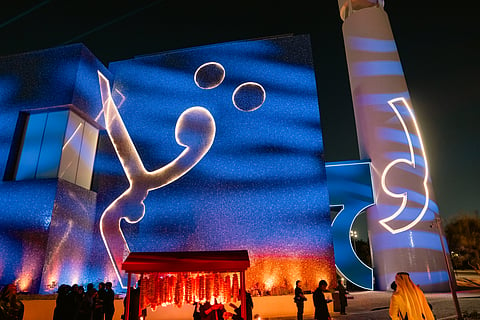Museum honouring M.F. Husain’s life and legacy opens in Doha
Honouring M.F. Husain’s journey, global legacy and the deep cultural ties he helped shape

Doha has opened a landmark tribute to one of the 20th century's most influential modern artists with the launch of the Lawh Wa Qalam: M.F. Husain Museum. Dedicated to the life, work, and sweeping global legacy of Maqbool Fida Husain—often hailed as the “Picasso of India”—the museum spans more than 3,000 square metres within Qatar Foundation’s Education City. It offers visitors a deeply immersive experience rooted in Husain’s own artistic vision.
The architectural concept originated in a simple sketch by Husain, which evolved into four distinct spatial elements: a vivid blue volume, a cylindrical white tower, a striking yellow pathway, and a tent-like structure. These components symbolise the fluidity, energy and curiosity that defined his multidisciplinary practice. From painting and film to calligraphy, design and photography, the museum reflects the breadth of a creative mind that refused to be contained.
Beyond celebrating his artistic genius, the museum also spotlights Husain’s strong cultural ties to the Middle East. His later years were profoundly shaped by his relationship with Sheikha Moza bint Nasser, whose admiration for his work—particularly his reflections on Arab civilisation—led to several commissioned series and ultimately influenced his decision to accept Qatari citizenship in 2010. Born in Pandharpur, Maharashtra, in 1915, Husain’s journey spanned continents, with Dubai, London and Doha playing pivotal roles in his career.
The inauguration drew prominent global figures, including Gauri Khan, Sabyasachi Mukherjee, and the Maharaja and Maharani of Baroda, Samarjitsinh and Radhikaraje Gaekwad, further underscoring the artist’s enduring international resonance.
Sign up for the Daily Briefing
Get the latest news and updates straight to your inbox





